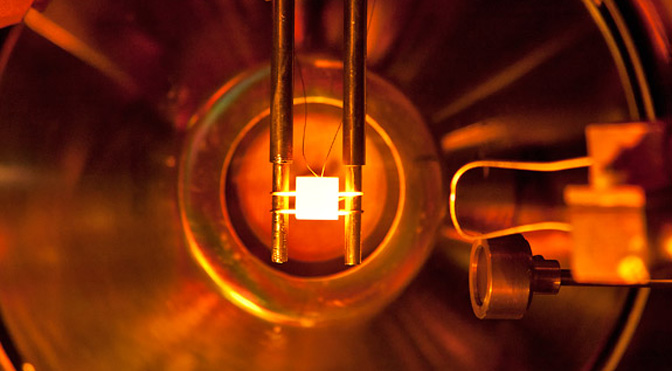The nuclei that smash together to produce fusion energy in a reactor originate from ionized neutral particles. The edges of fusion devices have large numbers of neutrals available to gain or lose electrons to become ions. These neutrals influence several important features of the plasma, including the rate at which the plasma fuels a reactor. In addition, the interactions between the confined plasma and edge neutrals are key to successful confining of the plasma in a reactor. These factors are key to the overall performance of a fusion power device. However, scientists have lacked high-resolution measurements of neutral deuterium in fusion devices. Deuterium is a form of hydrogen commonly used to fuel today’s fusion experiments. This research used a new pinhole camera system called Lyman-alpha Measurement Apparatus (LLAMA) installed on the DIII-D tokamak. LLAMA measures the brightness of Lyman-alpha light, an ultraviolet wavelength emitted at the boundary of fusion plasmas. Lyman-alpha light is produced by neutral atoms of deuterium interacting with the boundary of the plasma.
The Impact
By measuring the brightness of Lyman-alpha light, LLAMA allows researchers to determine the neutral deuterium density and ionization rates at DIII-D. This will help them study the influence of neutrals on fusion devices. In addition, by using a first-of-its-kind Lyman-alpha brightness calibration for LLAMA, scientists can better infer density values and fueling rates. This will improve their understanding of how edge neutral deuterium affects plasma fueling. The result will be better computer simulations for predicting the performance of future fusion energy devices.
Summary
At the edge of plasmas that are magnetically confined in fusion devices such as in tokamaks, the plasma density and temperature increase roughly a hundredfold in the span of a few centimeters, which builds up a high pressure needed to raise the fusion rate at the plasma center. Scientists expect that the magnitude of change in the edge pressure is greatly influenced by neutral particles, which become ionized in this region. By measuring ultraviolet light emitted at a particular wavelength called Lyman-alpha, LLAMA gives researchers valuable information on neutral deuterium particles in this dynamic region on DIII-D, a tokamak that confines plasma in a donut-shaped torus. The new measurements are made at two key locations: one at the outboard side of the torus, and one on the inboard side (in the “doughnut hole”). The researchers also developed a method to absolutely calibrate the LLAMA, determining the exact amount of ultraviolet Lyman-alpha light which enters the system. By providing accurate measurements of neutrals in two locations in the tokamak, LLAMA will give researchers insight into in-out asymmetries in neutral particle dynamics and will illuminate the processes by which fusion plasmas take on their fuel.
LLAMA was designed, fabricated, and calibrated through a collaboration between the Plasma Science and Fusion Center at the Massachusetts Institute of Technology (MIT) and the Princeton Plasma Physics Laboratory and is a focus of MIT graduate student Aaron Rosenthal’s thesis. The new device advances the engineering and measurements solutions for Lyman-alpha light diagnostics. It utilizes advanced filtering components which reduce contamination by neighboring line intensities. Multiple components are 3D printed in Inconel, a non-magnetic steel suitable for the extreme environments of the tokamak vessel. State of the art alignment techniques using a coordinate measuring machine allow high resolution ex-vessel alignment of the diagnostic. Furthermore, the development of a calibration procedure in the ultraviolet, historically a challenge, now provides a significant advancement for quantitative analysis of neutral particles in tokamaks.















